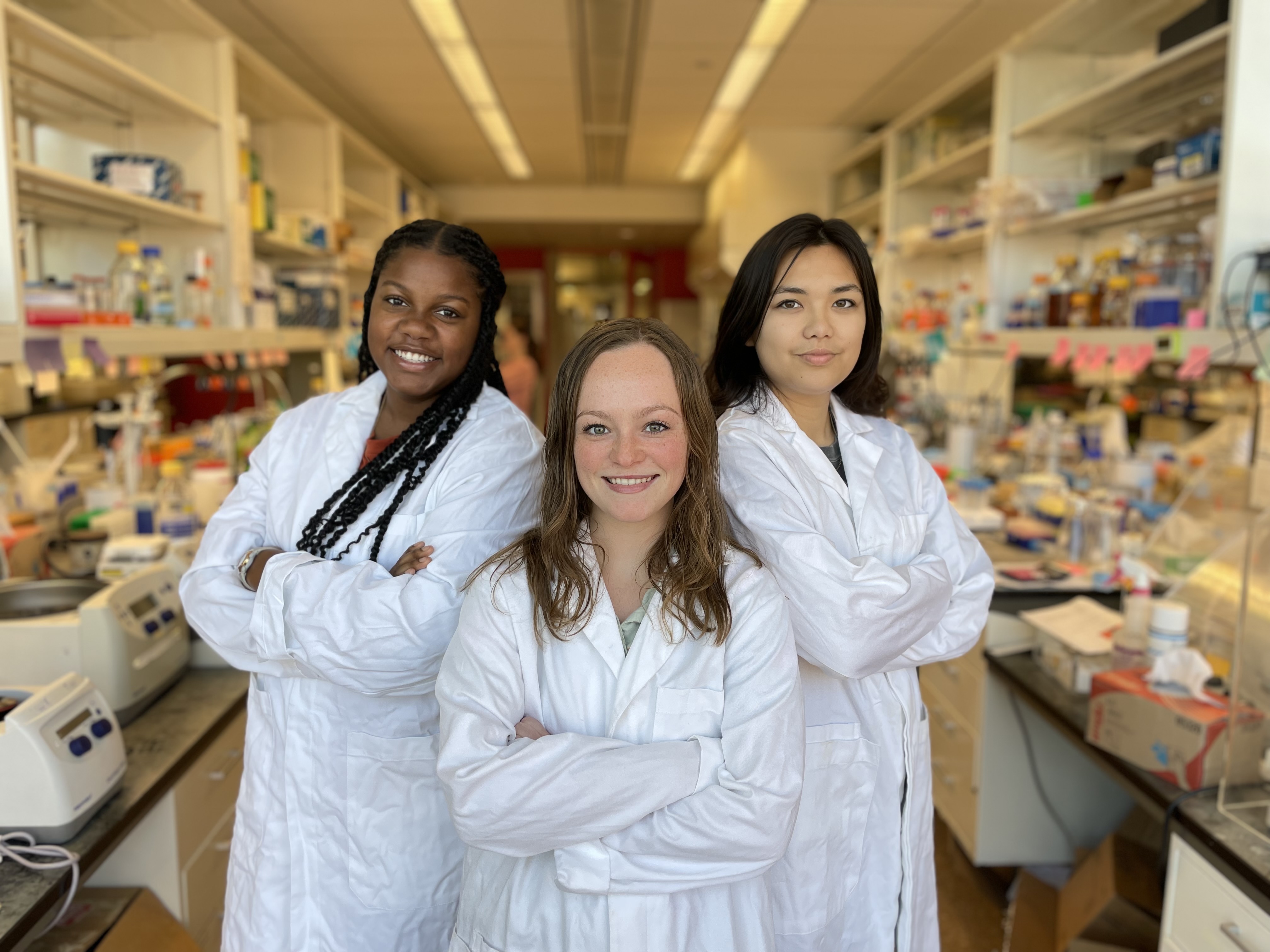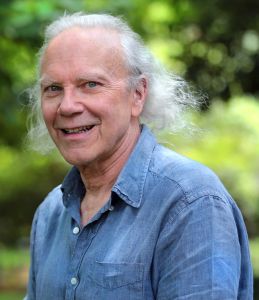Study Finds Protein Stability in Cells a Complex Balance of Repulsion and Attraction

Chemistry Ph.D. candidate Jordyn Markle, center, along with Tarynn Neal, left, a Morehead-Cain scholar, and Hania Kantzer, Chancellor's Carolina Scholar, set out to better understand the surprising effects of protein crowding.

May 2, 2025 | By Dave DeFusco
In the microscopic world inside our cells, space is at a premium. Proteins—tiny molecular machines that perform essential tasks like digesting food, fighting infections and sending signals—exist in extremely crowded environments. In fact, inside a cell, the concentration of proteins can reach as high as 300 grams per liter. That’s like dissolving 60 teaspoons of sugar in a single cup of water.
Yet, scientists often study proteins in labs under much more diluted conditions—less than 1 gram per liter—mainly to simplify experiments. But how accurate are those results, given the vast difference between test tubes and living cells?
That question drove a team of chemists at UNC-Chapel Hill to explore what really happens to a protein when it’s packed in tightly with its neighbors. In a Protein Science study, “Crowding-induced Stabilization and Destabilization in a Single Protein,” Chemistry Ph.D. candidate Jordyn Markle, with Tarynn Neal, a Morehead-Cain scholar, and Hania Kantzer, Chancellor’s Carolina Scholar—all working under the guidance of Dr. Gary Pielak, senior author and Kenan Distinguished Professor—set out to better understand the surprising effects of protein crowding.
Their research reveals a complex truth: when proteins crowd together, they can both stabilize and destabilize themselves—sometimes in unexpected ways.
“For decades, scientists have believed that when proteins are crowded, they’re generally more stable,” said Dr. Pielak. “This idea comes from the concept of ‘excluded volume’—essentially, proteins take up space and can’t overlap, so they tend to stay in their compact, folded forms to avoid bumping into each other. This entropic effect, a type of stabilizing force in classic crowding theory, was expected to dominate in crowded environments.”
But as more researchers have studied proteins under crowded conditions, strange things have emerged. Proteins don’t always get more stable. Sometimes they become less stable. That contradiction suggested that other forces, especially chemical interactions between proteins, might be at play.
To investigate, the UNC team used a simpler approach: they focused on just one kind of protein called GB1, a small, well-studied globular protein often used as a model. Rather than crowding it with synthetic materials or complex mixtures, they crowded GB1 with more GB1, allowing them to isolate the effects of protein-protein interactions—what they call “self-crowding.”
Using a sophisticated technique called nuclear magnetic resonance (NMR) spectroscopy, they were able to monitor how individual parts, or residues, of the protein behaved under crowded conditions, specifically by measuring hydrogen exchange rates—a marker of how stable or unstable a protein region is.
Their experiments showed that crowding can stabilize some parts of GB1 while destabilizing others, even within the same protein. The key insight is that these opposing effects arise from two different types of interactions between proteins:
- Repulsive interactions, like charges pushing away from each other, help stabilize parts of the protein that only become exposed when the whole protein unfolds. These regions were harder to unfold in crowded environments, likely because surrounding proteins pushed back against the unfolding.
- Attractive interactions, like weak chemical bonds or sticky patches, can destabilize parts of the protein that unfold locally, just a few segments at a time. These segments became easier to unfold as protein concentration increased, probably because nearby proteins were pulling on or subtly interfering with them.
“In other words, proteins are like introverts at a party,” said Markle, one of the lead authors. “Sometimes being surrounded by others keeps them calm and collected, or folded, while other times, the crowd makes them lose composure, or unfold.”
Understanding how proteins behave in crowded environments is vital for both basic biology and applied research. Inside our cells, protein crowding affects everything from how enzymes work to how diseases like Alzheimer’s and Parkinson’s begin, which are linked to misfolded or aggregated proteins.
The new findings also highlight the importance of moving beyond overly simplified lab experiments. By showing that proteins can be both stabilized and destabilized by crowding, and identifying the underlying forces at play, the UNC team has provided a more realistic view of what happens inside living cells.
“Our study supports the idea that protein stability in cells isn’t just about space, it’s also about the chemistry between neighbors,” said Markle. “It’s a complex balance of repulsion and attraction.”

